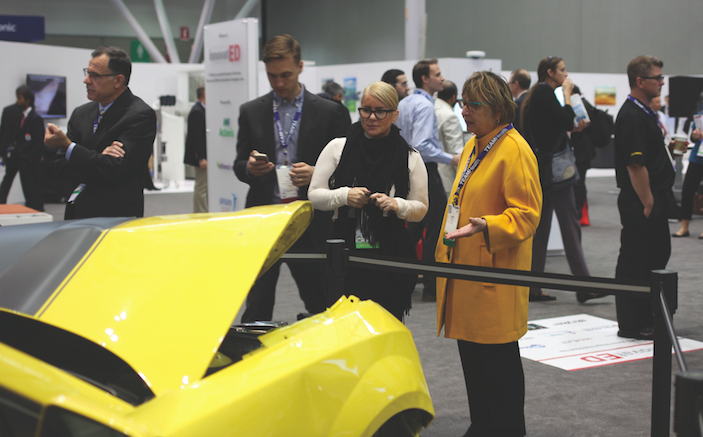Once again, the ACEP Scientific Assembly offered a veritable playland of medical gadgets and gizmos. Many of these offerings were concentrated within ACEP’s now perennial “InnovatED”. This year’s “innovation zone” was full of video laryngoscopes, telemedicine setups, trackboards… and a wrecked Camaro.
Why did someone decide to drop a beautiful hot rod with a dramatic front-end collision into the middle of an exhibit hall? Because as it turns out, GM OnStar has the capability, at the time of a crash, to determine the likelihood of a severe injury. They derive this number based on maximum change in car velocity, direction of force, whether occupants were wearing seatbelts, and other factors. If the likelihood crosses a certain threshold, first responders are notified to help choose an appropriate ED for transport. In coordination with the CDC, researchers at Ann Arbor reviewed the data; a threshold of 20% was found to combine an optimal balance of sensitivity and specificity. OnStar also certifies emergency advisors who can guide drivers and passengers after a crash (or delivering a baby, as the case may be). The OnStar emergency dispatcher can relay crash telemetry and vehicle occupant details to the local 911, to help EMS plan transport.
 Another novel find was a new kind of manikin – a “SynDaver” – for use in simulation education. This next gen sim man is made of a material that offers an unusually realistic skin texture, a layered and appropriate toughness, and a bit of (unsettling) moisture. Intubating on the SynDaver felt more realistic than prior manikins I’ve used, and trying to move the synthetic tongue out of the way was downright disturbing. Placing IOs on the SynDaver elicited sympathy. One barrier to realism was the skin’s unusual coolness to the touch; we were told this is because vendors had initiated therapeutic hypothermia. SynDavers can be made to have functioning circulatory and respiratory symptoms, with musculature and internal organs. They were originally designed for validating medical device design and manufacturing, but are now finding their way into anatomy labs, simulation labs – including surgery simulation. There is even a model for morticians in training. Students will probably find it a step up from practicing sutures on oranges (it’s good for venipuncture and cric training, too) but their teachers may balk at the cost.
Another novel find was a new kind of manikin – a “SynDaver” – for use in simulation education. This next gen sim man is made of a material that offers an unusually realistic skin texture, a layered and appropriate toughness, and a bit of (unsettling) moisture. Intubating on the SynDaver felt more realistic than prior manikins I’ve used, and trying to move the synthetic tongue out of the way was downright disturbing. Placing IOs on the SynDaver elicited sympathy. One barrier to realism was the skin’s unusual coolness to the touch; we were told this is because vendors had initiated therapeutic hypothermia. SynDavers can be made to have functioning circulatory and respiratory symptoms, with musculature and internal organs. They were originally designed for validating medical device design and manufacturing, but are now finding their way into anatomy labs, simulation labs – including surgery simulation. There is even a model for morticians in training. Students will probably find it a step up from practicing sutures on oranges (it’s good for venipuncture and cric training, too) but their teachers may balk at the cost.
Photos by Bridget McGahen



